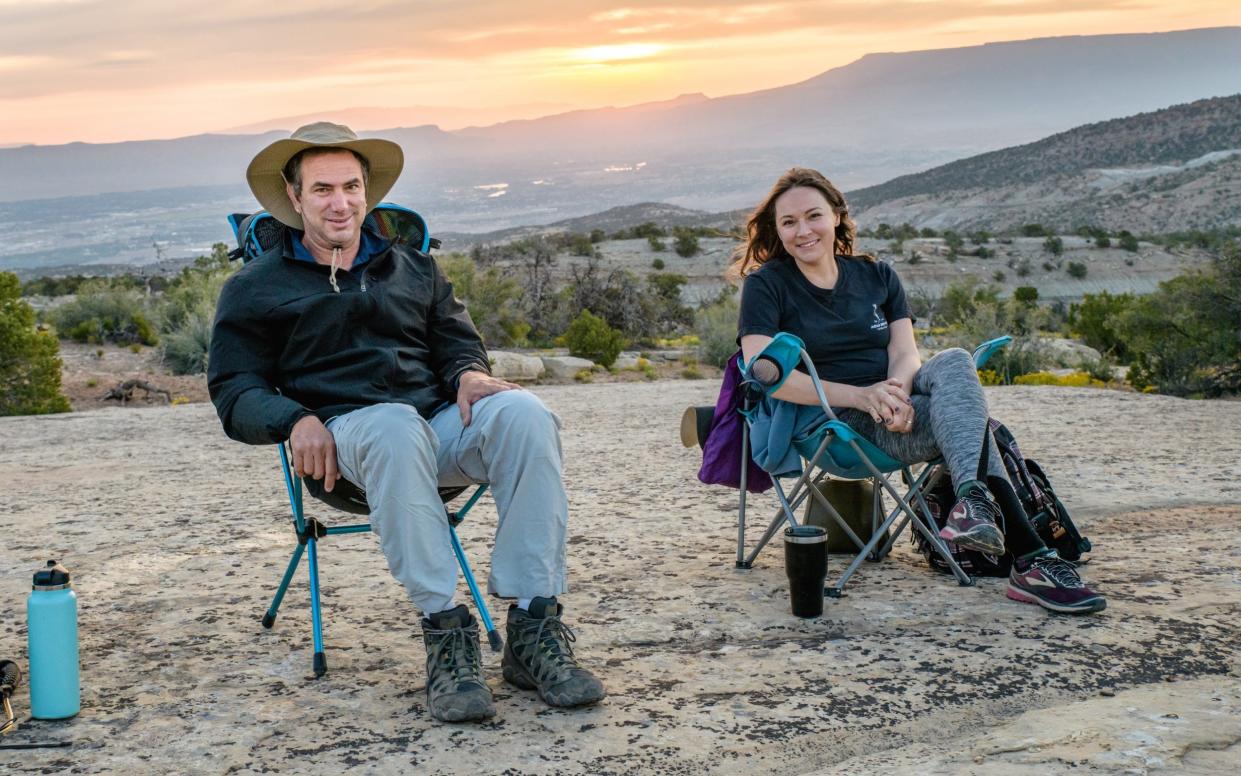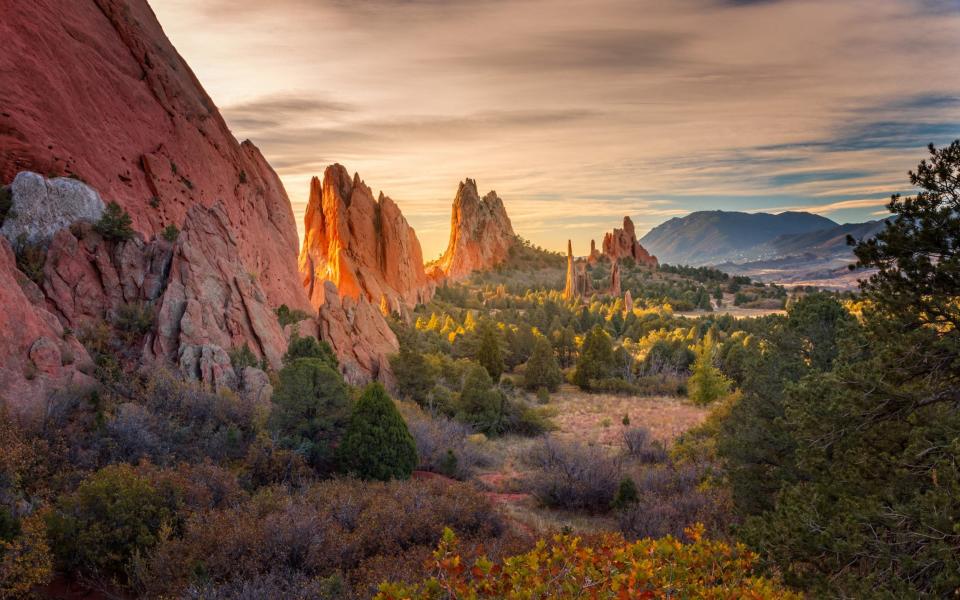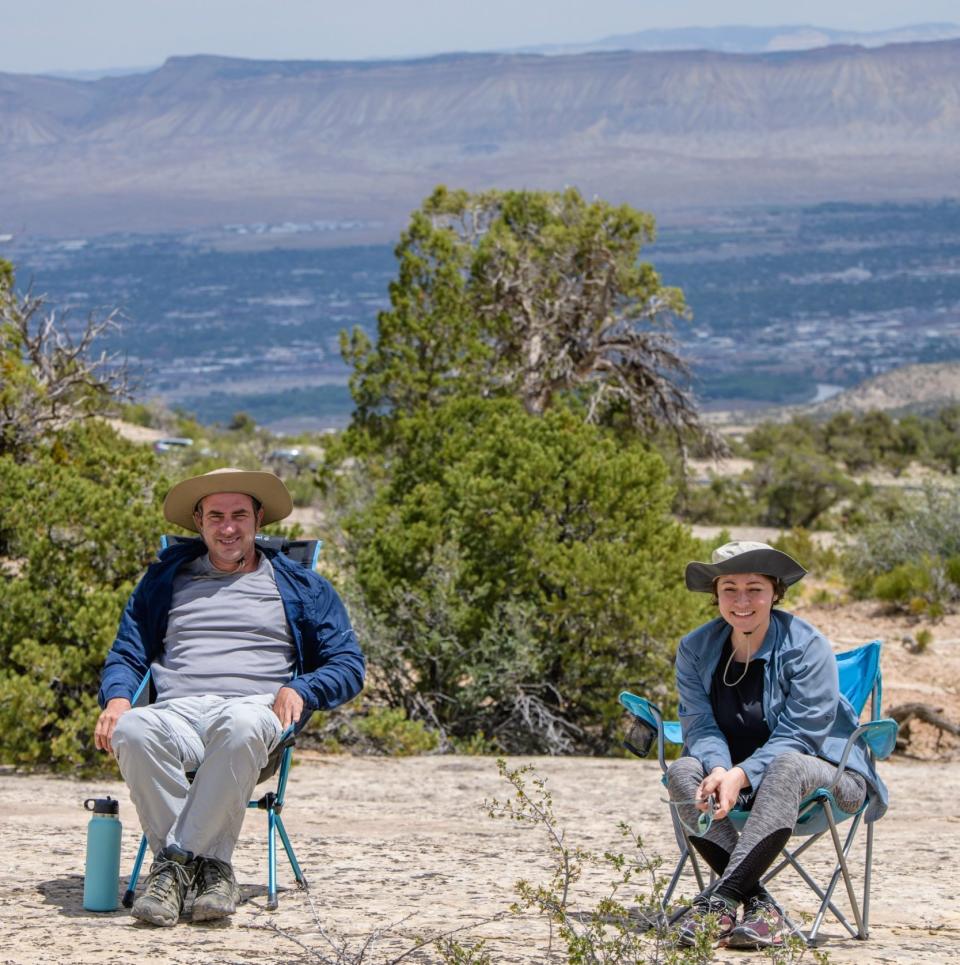The surprising benefits of sitting still for hours at a time on holiday

“Is it noon?” I asked Robby Silk, the inventor of a strange new holiday activity called “extreme sitting”, which involves simply placing your derriere in a chair from sunrise to sunset. The sun was somewhat above my head. It felt like we had been out on this slickrock slab in Colorado’s untamed landscape, watching the sun cast changing shadows on the canyons around us, for at least six hours. Silk looked up at the sky. “No,” he said. “It’s probably closer to 9am.”
Silk, the creator and world champion of “extreme competitive sitting” claims that the activity can bring a sense of awe, gratitude and calm to a trip. I’ve voluntarily left the comfort of my bed at 4.30am on a bank holiday weekend to join him for an extended sit in the desert of Western Colorado. “I think everyone can benefit from stillness,” Silk maintains.
The idea came about in 1995, on Silk’s trip to Israel. He was inspired by a character in his holiday book The Haj by Leon Uris, which describes a man sitting in the desert waiting for a delivery. “He doesn’t know when or if the person is supposed to show up, but he sits there and waits, because he has nothing else to do,” Silk explained. “It made me wonder what would happen, what I would do, if I didn’t have a schedule.”
Since that trip, Silk has sat for varying lengths of time under the strict rules he’s invented (more on that to follow) in places such as Joshua Tree National Park, Sedona, and Antarctica. He considers each sit an opportunity to observe and reconnect with the rhythm of the day, and to peel the soul away from the ticking clock of our modern daily schedules.
Today, at the beginning of our sit, we plopped down in a pair of camp chairs on an intriguing outcropping of smooth, weathered sandstone, as the sun rose over Grand Junction. Silk explained the rules of his new sport: “Only light snacks and water are allowed.” This is the first rule I’ve broken. In my flask is an entire cafetiere of coffee, because I’m not a monk and 5am is not my finest hour.

There’s also a ban on phones, watches, or anything powered by batteries or electricity, I soon learned. So, no catching up on Netflix, and no nature photography sessions. “You may stand up to stretch and to relieve yourself,” advised Silk. Other than that, I’ve got to just sit, from the time the sun comes up until it passes under the horizon, “or for as long as I can stand to not stand”.
To anyone with a desk job like me, it’s difficult to understand why Silk considers this style of sitting an activity, let alone a rejuvenating one to do on holiday. But his enthusiasm is not without merit. People who spend at least two hours per week immersed in nature are much more likely to report improved physical, mental, and emotional wellbeing, according to a survey of 20,000 people, conducted by the European Centre for Environment and Human Health at the University of Exeter. Notably, the survey found no significant benefits for shorter time periods. Silk simply takes this concept to the extreme, and folds in a sessile requirement.
I was tired upon my arrival at 5.25am, but not more tired than Silk, who admitted to common bouts of insomnia. Lucky for him, the rules set forth by the Board of Extreme Competitive Sitting (currently composed of one – Robby Silk) allow for sleeping during an extreme sit. I’m sure Silk dozed off once or twice during this 14-hour bake, aided by a book about the racehorse, American Pharoah.
“There’s a discipline to this,” Silk said shortly after he had given up on staying awake enough to read the book. His words hit home – at that moment, I was feeling pulled toward the round stacks of sandstone just ahead, imagining how fun it would be to hop across them like Mario. No. No hopping today, only sitting, I told myself.
We spent a lot of our time in the desert that day chatting, reading, and sitting in slightly awkward silence. At one point, we pondered an odd-shaped stump in the distance. He thought it was a sleeping donkey.
As a person who prefers not to be on a schedule but often must be, I was surprised at how often I reached for my phone to check the time out of habit and boredom. This itch frequently hijacked my motor skills, but tech addicts like me would surely benefit most from not having information or the time at their fingertips for an entire day.
While my sense of time had warped, my brain had remained somewhat busy, taking stock of things around me – the depth of the crevasses in the red rocks, the sounds of the birds flitting around us, the blissful feeling of the sun hitting my skin when the clouds parted. I had pulled out a sketchbook (allowed) to draw the contours of the cliffs and canyons around me. When the sun illuminated a canyon wall, I noticed a hole in the rock surface with what looked like an entire forest inside it. Time had just taken a backseat – the very thing I aim for on holiday.
It wasn’t long before I began wondering where I should relieve myself. After my fourth scramble down a sketchy sandstone outcropping before Silk had even stood up to stretch, I understood the reasoning for the water-only rule.

After five hours, my enthusiasm for sitting had waned. I was grumpy, sunburnt, and my body was protesting the pile of almonds I had fed it. But in the spirit of discipline, and understanding what Silk gets out of this, I sat for another hour and pulled out a book I had brought – About Looking, by John Berger (appropriately titled, I thought the night before). But half a dozen hours in I wanted to throw it off the cliff.
I had hit my mental threshold and fully understood the “competitive” part of this peculiar “sport”. It’s not easy, at all, to sit for 14 hours straight. I managed six hours and eight minutes and finished feeling relieved, not refreshed. However, Silk did convince me of the benefit of sitting still for a few hours and as I left I vowed to keep up the practice, as he went on to break his own extreme sitting record that day, with a total sit time of 14 hours and 39 minutes.
Those not interested in the competitive part of extreme sitting have a world of options. Shorter sits have plenty of science-backed benefits, Silk suggests – three to six hours – once a month. Most of us already do shorter extreme sits on holiday in some form, on a beach or hotel balcony. All you have to do is leave your phone at home, making it an ideal holiday activity.
While Silk is presently the sport’s only competitor, he looks forward to the day he meets a worthy opponent. Recently, he registered Extreme Sitting LLC, which he plans to develop into a bigger sitting movement, and hopes to start a sitting retreat. Until then, Silk is issuing an extreme sitting challenge to anyone interested. Find a scenic place and sit there for at least three hours with no electronics, then have someone else take a photo of you to post on Instagram with the hashtag #ExtremeSit. Or, just sit on your hotel lounger and take a nap, sans hashtag, if that’s closer to the rhythm of your day.
The rules of extreme sitting
Like other outdoor endurance sports, extreme sitting can be undertaken as either a competitive endeavour or as a less rigorous, recreational pastime. Either way, participants should sit at length, disconnected, in a scenic outdoor location.
Powered devices of all kinds are prohibited
The drinking of water is allowed and encouraged as a health precaution. So are light snacks. I suggest about a gallon of water for a full summer’s day
The consumption of alcohol is not allowed
Timepieces are prohibited. You can make a decent estimate on how long you’ve been at it by noting the movement of the sun – provided the day isn’t too dreary. Starting with the sunrise or finishing with sunset adds to the experience
Endurance sitters should aim to sit from sunrise to sunset. First-time extreme sitters should starting slowly – sit for three or four hours
Standing is allowed to relieve oneself, and for occasional, brief stretching sessions. Over the course of 14 hours, for example, I’m out of the chair for less than 10 minutes
Shop for a comfortable, light camping chair, but not one that reclines (not allowed)
Wear a wide-brimmed hat, long pants and a UV protective long sleeve shirt, even in hot weather. Bring plenty of strong sunscreen, as sunny days are the most satisfying. And bring extra layers in case the weather team gets it wrong.
The sitter should be away from any shadowing.
Robby Silk

 Yahoo Movies
Yahoo Movies 
